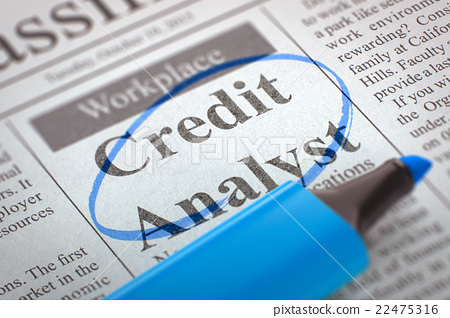Contents
But not all equities trade at the same rates or attract the same amount of interest from traders. A higher daily volume of trading indicates more buyers and a more liquid stock. Consider a diversity of investments to make capital available when needed.

While it can’t guarantee a company can meet their debt obligations in a timely fashion, it usually gives a good summary of a business’ financial operations. Liquidity gives people a clear glimpse into the financial health of an individual, market, or corporation. When someone has high liquidity, they’re in a solid financial position because they can quickly convert their holdings into cash. Businesses and individuals with high liquidity can reliably pay off their financial obligations.
How to Off-Ramp Bitcoin and Other Cryptos
The owner would still want to check in regularly and review the financial ratios to make sure changing market forces don’t disrupt its financial position. The company also has long-term debt and shareholder equity of $1,000. But those won’t be used in the liquidity ratios because they won’t come due in less than a year. Understanding the liquidity of your portfolio is a key component of risk management. If you can easily convert your stock holdings into cash, then you can settle unexpected expenses, even if the stock market broadly declines. Trading volume of at least 1 million shares daily is considered a sign of market liquidity.
The asset that is the most liquid, and thus the most easily transferable, is cash. In fact, the fundamental meaning of “liquidate” is to convert something into cash. When applied to an individual asset, liquidity refers to the ability to convert the asset into cash on short notice and at a minimal discount.
In addition, specific types of investments may not have robust markets or a large group of interested investors to acquire the investment. Consider private shares of stock that cannot easily be exchanged by logging into your online brokerage account. The quick ratio is a calculation that measures a company’s ability to meet its short-term obligations with its most liquid assets.
- Injective is a custom interoperable layer one protocol for building powerful exchange, DeFi, derivatives & Web3 applications.
- In the example above, Escape Klaws could see quickly that it’s in a good position to pay off its short-term debts.
- If a market is liquid, traders can quickly buy and sell their assets at agreed-upon prices.
- Also listed on the balance sheet are your liabilities, or what your company owes.
Try using long-term financing instead of short-term to improve your liquidity ratio and free up cash to invest back in your business or pay off liabilities. Companies use assets to run their business, manufacture items or create value in other ways. Assets can include things like equipment or intellectual property. Inventory, or the products a company sells to generate revenue, is usually considered a current asset, because generally it will be sold within a year. For an asset to be considered liquid, it needs to have an established market with multiple interested buyers.
Understanding liquidity can be useful when you’re making investment decisions. This guide covers what liquidity is, how it works and how liquidity might relate to your finances. If a person has more savings than they do debt, it means they are more financially liquid. Liquidity refers to how much cash is readily available, or how quickly something can be converted to cash. Many or all of the offers on this site are from companies from which Insider receives compensation . Advertising considerations may impact how and where products appear on this site but do not affect any editorial decisions, such as which products we write about and how we evaluate them.
For example, we may sell the asset to a dealer for $99.00 and let the dealer then worry about waiting to find someone who wants this asset. This can attract more traders to the market, which adds to the favorable market conditions. Of course, such a perfectly liquid market is rarely observed in the world.
Investors should take into consideration the stock’s bid-ask spread, which is the difference between the quoted price and its immediate purchase price. This is a fee paid by the buyer, and it represents an important part of the overall transaction cost. People who use high-profile CEXs can quickly find buyers and sellers for many digital assets. Also, many CEXs now allow people to use fiat currencies, cards, or fintech apps to purchase crypto. The more fiat onramps and offramps in the crypto space, the more fluid these tokens become. A ratio above .5 is usually a good indicator of a healthy cash flow.
What Is Forex Trading? How Is It Different From Crypto?
Financial liquidity refers to how easily assets can be converted into cash. Current Assets is an account on a balance sheet that represents the value of all assets that could be https://cryptolisting.org/ converted into cash within one year. The most liquid stocks tend to be those with a great deal of interest from various market actors and a lot of daily transaction volume.
A company is also measured by the amount of cash it generates above and beyond its liabilities. The cash left over that a company has to expand its business and pay shareholders via dividends is referred to as cash flow. Before investing in any asset, it’s important to keep in mind the asset’s liquidity levels since it could be difficult or take time to convert back into cash. Of course, other than selling an asset, cash can be obtained by borrowing against an asset.
Take, for another example, selling tangible items on an online marketplace, like eBay. A t-shirt will most likely sell faster than a vintage bicycle, or a new car, or even a house, because those transactions are more complex—and more expensive. Just like the scientific term, liquidity in finance has everything to do with “flow.”

They can be tangible items like equipment used to create a product. Or assets can be intangible, like a patent or a financial security. On a balance sheet, cash assets and cash equivalents, such as marketable securities, are listed along with inventory and other physical assets. High liquidity ratios indicate a company is on a strong financial footing to pay its debt.
Accounting liquidity
In other words, the buyer wouldn’t have to pay more to buy the stock and would be able to liquidate it easily. For illiquid stocks, the spread can be much wider, amounting to a few percentage points of the trading price. The market for a stock is liquid if its shares can be quickly bought and sold and the trade has little impact on the stock’s price. Company stocks traded on the major exchanges are typically considered liquid. Land, real estate, or buildings are considered among the least liquid assets because it could take weeks or months to sell them.

This shows the company’s capacity to pay off short-term debt with cash and cash equivalents, the most liquid assets. As you can see in the list above, cash is, by default, the most liquid asset since it doesn’t need to be sold or converted (it’s already cash!). Stocks and bonds can typically be converted to cash in about 1-2 days, depending on the size of the investment. Finally, slower-to-sell investments such as real estate, art, and private businesses may take much longer to convert to cash . Some investments are easily converted to cash like public stocks and bonds. Since stocks and bonds have public exchanges with continual pricing, they’re often referred to as liquid assets.
Are stocks liquid assets?
So, at the top of the balance sheet is cash, the most liquid asset. That’s because real estate has value, but it may take some time to sell property. But learning about the liquidity of your assets can help you gauge how flexible your money situation is. Learning some liquidity basics could help you make informed decisions about your investments. Ali Hussain worked in credit risk management, analyzing the risk factors of doing business with hedge funds. He started his career with Deutsche Bank and worked at other large financial institutions, such as Citigroup, Bear Stearns, and Societe Generale.
At the end of 2021, the company had less short-term resources to meet short-term obligations. Coins, stamps, art and other collectibles are less liquid than cash if the investor wants full value for the items. For example, if an investor was to sell to another collector, they might get full value if they wait for the right buyer.
Figuring out how much money is readily available can help people better manage their portfolios. Intuitively it makes sense that a company is financially stronger when it’s able make payroll, pay rent and cover expenses for products. But with complex spreadsheets and many moving pieces, it can be difficult to see at a glance the financial health of your company. what is envoy Liquidity refers to the company’s ability to pay off its short-term liabilities such as accounts payable that come due in less than a year. Both types of liquidity can be relevant to you as an investor, but a stock’s market liquidity is generally what is implied when investors discuss liquidity. Keep reading to learn everything you need to know about liquidity.
Why liquidity matters
The operating cash flow ratio is a measure of short-term liquidity by calculating the number of times a company can pay down its current debts with cash generated in the same period. The ratio is calculated by dividing the operating cash flow by the current liabilities. A higher number is better since it means a company can cover its current liabilities more times. An increasing operating cash flow ratio is a sign offinancial health, while those companies with declining ratios may have liquidity issues in the short-term. The quick ratio, sometimes called the acid-test ratio, is identical to the current ratio, except the ratio excludes inventory.

